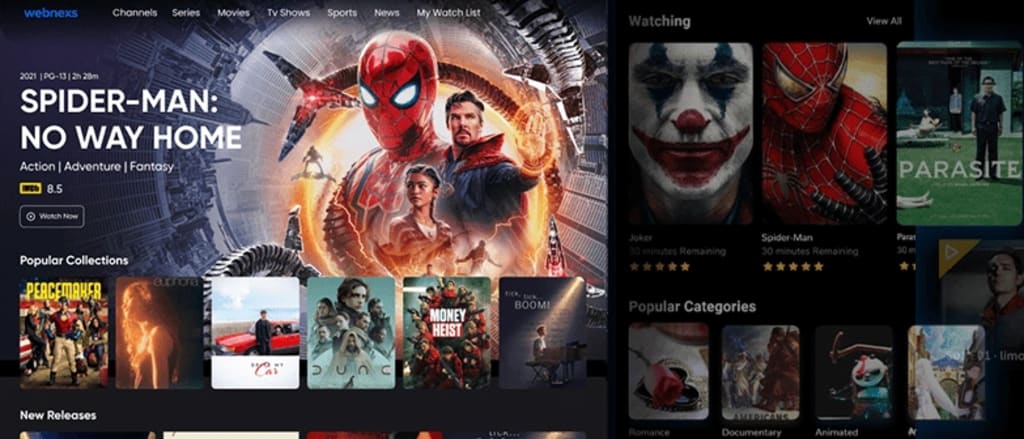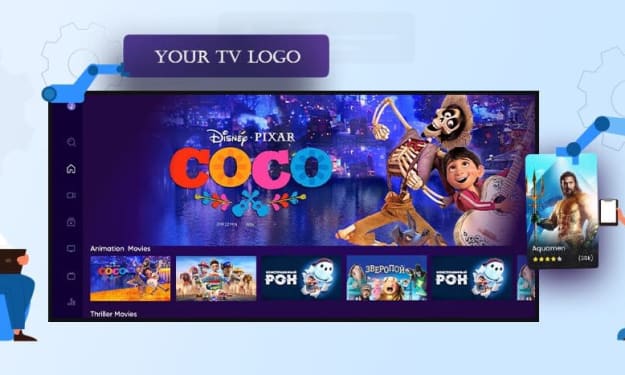What is the full form of OTT: A complete guide and meaning of OTT
Full Form of OTT

Definition of OTT:
OTT, which stands for “Over The Top,” is a technology that enables content providers to deliver video content across various devices using the internet. It is quickly gaining popularity as a viable alternative to traditional cable television programming.
The younger generation is particularly fond of this new trendsetter of OTT platform streaming because of the availability of web series, TV shows, and video games.
OTT allows viewers to watch preloaded TV episodes or any OTT content an unlimited number of times. These are typically organized in a large and centralized library of movies in multiple languages.
If you’re curious to learn more about what is OTT platform, Full Form of OTT, the future of entertainment that’s already taking shape, then you’re in the right place.
What Is OTT Platform?
OTT platform is created by combining various streaming services that are transmitted through the internet. Its media services can be adjusted to suit any device, and content providers can reach a worldwide audience with their content. The key feature of OTT platforms is that they bypass traditional distribution channels and offer content directly to consumers.
Full Form of OTT
OTT stands for “over-the-top.” This term originally referred to devices that bypassed cable operators to offer TV channels directly to viewers, but it has since evolved to encompass streaming services that offer a wide range of digital content.
In essence, OTT services provide a way to deliver media content directly to viewers over the internet, bypassing traditional distribution channels like cable or broadcast TV.
What is the meaning of OTT
What is ott and full form of OTT goes beyond the traditional entertainment platforms like YouTube and social media. It aims to enhance the quality of entertainment by offering premium content through computers and various devices. The term “premium” distinguishes it from the regular viewing experience and provides high-quality, captivating experiences to the viewers. It achieved through the use of wireless internet and high-end technology that delivers superior visual and audio quality.
The emergence of OTT has revolutionized the entertainment industry and opened new opportunities for content creators, producers and marketers. It has paved the way for the production of high-quality and diverse content that caters to the changing tastes and preferences of the audience.
It is a fast-growing industry that promises to provide a limitless supply of entertainment to viewers worldwide.
OTT Platform vs. Traditional TV
One of the biggest differences between OTT platforms and traditional TV is the way it delivered them to consumers. Traditional TV is delivered through cable, satellite, or broadcast networks, while OTT platforms deliver content over the internet. This means that users don’t need to subscribe to a cable or satellite service to access content on an OTT platform.
Another key difference is the level of control users have over what they watch and when they watch it. With traditional TV, it limited viewers to the programming schedule set by the network or cable provider. It offer on-demand access to a wide range of content, allowing users to watch their favorite shows and movies whenever they want. The term is also used in online video platforms, also audio streaming or video streaming solutions
Types of OTT Platforms
full form of ott and types of ott platform
There are several different types of OTT platforms, each with its own unique features and target audience. Some of the most common types include:
Subscription Video-on-Demand (SVOD) Platforms: These SVOD platforms offer users access to a large library of content for a monthly subscription fee. Examples include Netflix, Amazon Prime Video, and Hulu.
Transactional Video-on-Demand (TVOD) Platforms: These platforms allow users to rent or purchase individual pieces of content, such as movies or TV episodes, on a pay-per-view basis. Examples include Amazon Instant Video and Google Play.
Ad-Supported Video-on-Demand (AVOD) Platforms: These platforms offer free content to users in exchange for displaying advertisements. Examples include YouTube and Tubi.
Live Streaming Platforms: These platforms allow users to watch live streaming events, such as sports games or concerts, in real-time over the internet. Examples include ESPN+ and Sling TV...know more
About the Creator
Enjoyed the story? Support the Creator.
Subscribe for free to receive all their stories in your feed. You could also pledge your support or give them a one-off tip, letting them know you appreciate their work.





Comments
There are no comments for this story
Be the first to respond and start the conversation.